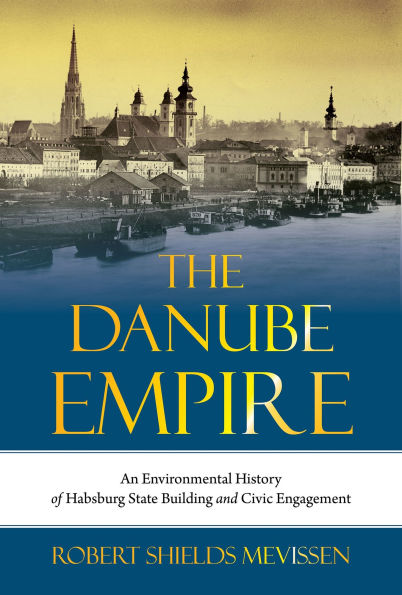In the nineteenth century, changes to the environment, driven by ideology, natural forces, and burgeoning fossil fuel power, shifted the course of the Habsburg Empire. Along the Danube—Europe’s second longest river—hydraulic engineering projects ranging from bridges to embankments and shipping hubs affected the river’s dynamics, as did new activities related to trade, industrialization, sanitation, recreation, and agriculture. Taking a unique environmental perspective to explore questions of transnational solidarity and identity, The Danube Empire argues that the Danube River served as both a catalyst and a tool for institution building. Drawing on primary sources in German and Hungarian, Robert Shields Mevissen reconstructs how various communities throughout the empire viewed and shaped river engineering works as a means to promote material wellbeing and economic vitality. As they negotiated their conflicting and overlapping interests, they engaged government at all levels, from the imperial to the local, through democratic and civic avenues. Offering new insights into the state’s normative development and robust civil society, Mevissen shows how an empire, in reshaping a river, reshaped itself.
1147140286
The Danube Empire: An Environmental History of Habsburg State Building and Civic Engagement
In the nineteenth century, changes to the environment, driven by ideology, natural forces, and burgeoning fossil fuel power, shifted the course of the Habsburg Empire. Along the Danube—Europe’s second longest river—hydraulic engineering projects ranging from bridges to embankments and shipping hubs affected the river’s dynamics, as did new activities related to trade, industrialization, sanitation, recreation, and agriculture. Taking a unique environmental perspective to explore questions of transnational solidarity and identity, The Danube Empire argues that the Danube River served as both a catalyst and a tool for institution building. Drawing on primary sources in German and Hungarian, Robert Shields Mevissen reconstructs how various communities throughout the empire viewed and shaped river engineering works as a means to promote material wellbeing and economic vitality. As they negotiated their conflicting and overlapping interests, they engaged government at all levels, from the imperial to the local, through democratic and civic avenues. Offering new insights into the state’s normative development and robust civil society, Mevissen shows how an empire, in reshaping a river, reshaped itself.
35.0
Pre Order
5
1

The Danube Empire: An Environmental History of Habsburg State Building and Civic Engagement
296
The Danube Empire: An Environmental History of Habsburg State Building and Civic Engagement
296
35.0
Pre Order

Product Details
| ISBN-13: | 9780822967798 |
|---|---|
| Publisher: | University of Pittsburgh Press |
| Publication date: | 11/04/2025 |
| Series: | Intersections , #31 |
| Pages: | 296 |
| Product dimensions: | 6.00(w) x 9.00(h) x (d) |
About the Author
From the B&N Reads Blog
